In the realm of modern skincare, few ingredients have earned as much scientific validation and consumer loyalty as retinol. Lauded for its ability to rejuvenate aging skin, smooth texture, and improve discoloration, this vitamin A derivative has become a staple in dermatological practice and consumer skincare routines alike. However, as more individuals incorporate retinol into their nightly regimen, a pressing question often emerges: how long does retinol take to work? This article explores the evidence-based timeline of retinol’s effectiveness, the mechanisms behind its benefits, and what dermatologists want consumers to know about setting realistic expectations when using this powerful but often misunderstood compound.
You may also like: How to Choose Skin Care for Fine Lines: Evidence-Based Tips for Healthier, Younger-Looking Skin
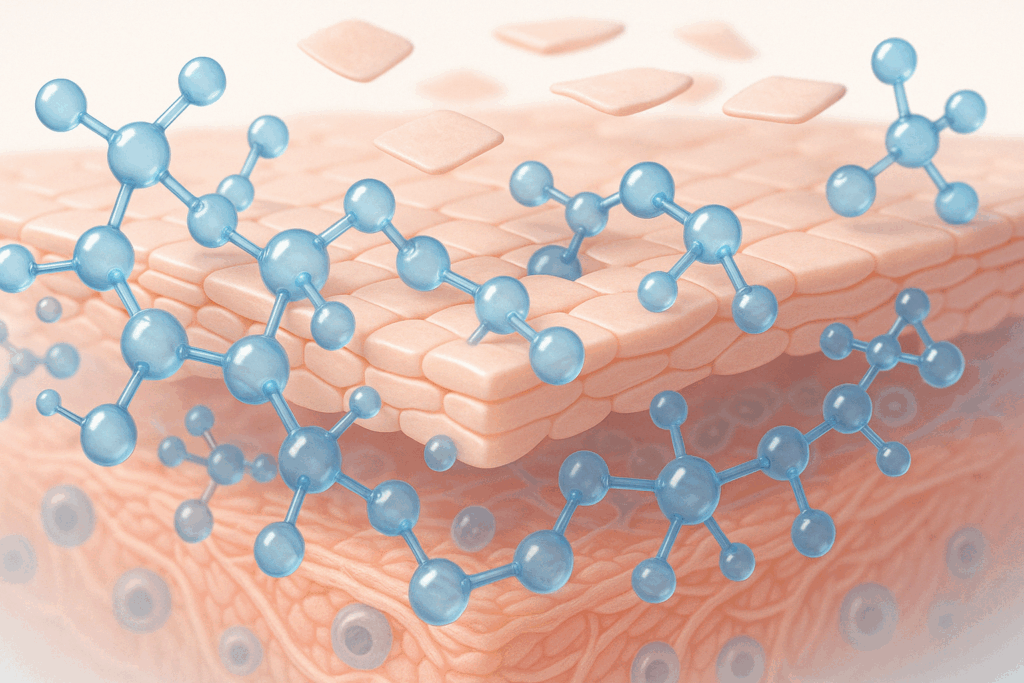
Understanding Retinol: The Science Behind the Skincare Staple
Retinol, a derivative of vitamin A, operates at a cellular level, influencing gene expression and cellular turnover. When applied topically, it promotes desquamation—the shedding of dead skin cells—while encouraging the production of new, healthy skin. Additionally, retinol stimulates fibroblasts to increase collagen and elastin production, which contributes to improved firmness and reduced appearance of fine lines. It also has a comedolytic effect, meaning it helps unclog pores and prevent acne lesions. Yet, despite these impressive properties, retinol does not deliver instant results. Its impact on skin texture, tone, and clarity unfolds gradually, demanding patience, consistency, and tolerance-building.
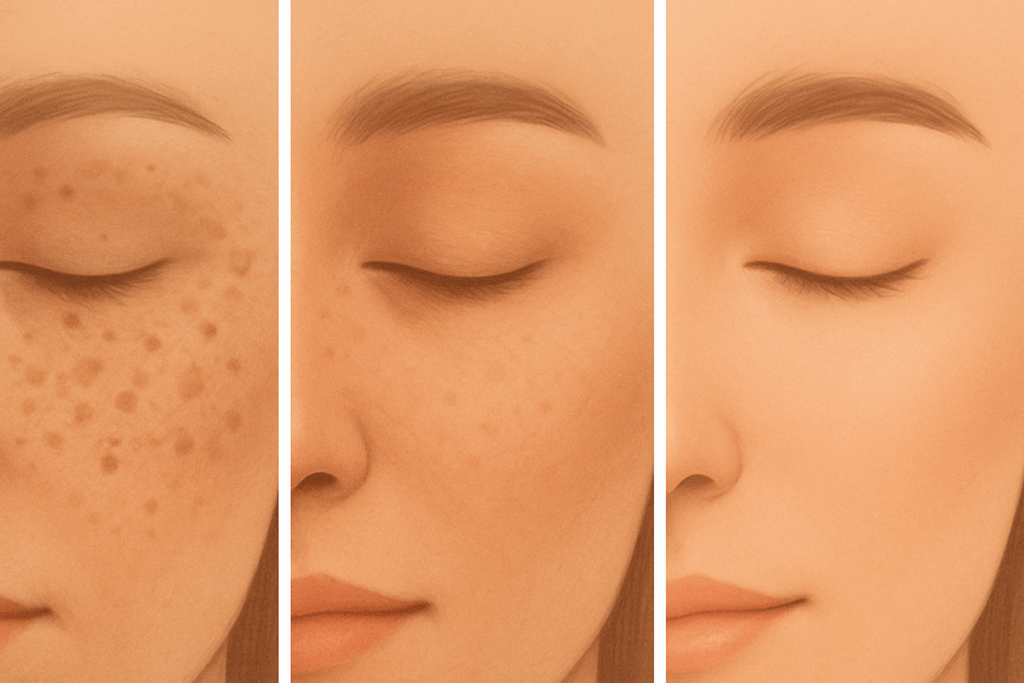
How Long to See Retinol Results: The Dermatological Timeline
Dermatologists generally agree that it takes a minimum of four to six weeks to see visible improvements when starting a retinol-based skincare routine. However, the full extent of its benefits often doesn’t manifest until 12 weeks or more of consistent use. In clinical studies, participants who used prescription-strength retinoids over a 12-week period exhibited significant reductions in fine lines, pigmentation irregularities, and acne breakouts. For over-the-counter (OTC) formulations, which contain lower concentrations of active retinol, this timeline may be slightly extended. When patients ask how long to see retinol results, dermatologists often emphasize that the initial phase of use might even make the skin appear worse before it improves—a phenomenon known as retinization, during which peeling, redness, and dryness are common.
What Influences the Retinol Timeline? Potency, Frequency, and Skin Type
While the general estimate of 4 to 12 weeks holds true for most users, several factors can influence how long retinol takes to work. The strength of the formulation plays a significant role. Prescription retinoids like tretinoin yield quicker results compared to lower-dose retinol serums available at drugstores. However, stronger doesn’t always mean better—particularly for individuals with sensitive skin. Frequency of application also matters. Starting slowly, with applications two to three times per week, helps the skin build tolerance, minimizing irritation. As the skin acclimates, users can gradually increase frequency. Additionally, skin type affects retinol response. Oily or acne-prone skin often tolerates retinol more quickly, whereas those with dry or reactive skin may require more time and gentler formulations to see results without inflammation.
Does Retinol Actually Work? The Evidence Behind the Claims
The question “does retinol actually work?” is not merely anecdotal—it is one answered definitively through decades of dermatological research. Retinol is among the most studied active ingredients in cosmetic dermatology. Multiple peer-reviewed studies have confirmed its efficacy in improving photodamaged skin, reducing wrinkles, and addressing post-inflammatory hyperpigmentation. It works by accelerating the skin’s renewal process and enhancing the deposition of dermal matrix components like collagen and glycosaminoglycans. The result is visibly smoother, more youthful skin. In acne treatment, retinol’s pore-clearing properties reduce comedones and prevent future breakouts. While individual experiences vary, the scientific consensus affirms that retinol not only works—it works exceptionally well when used correctly.
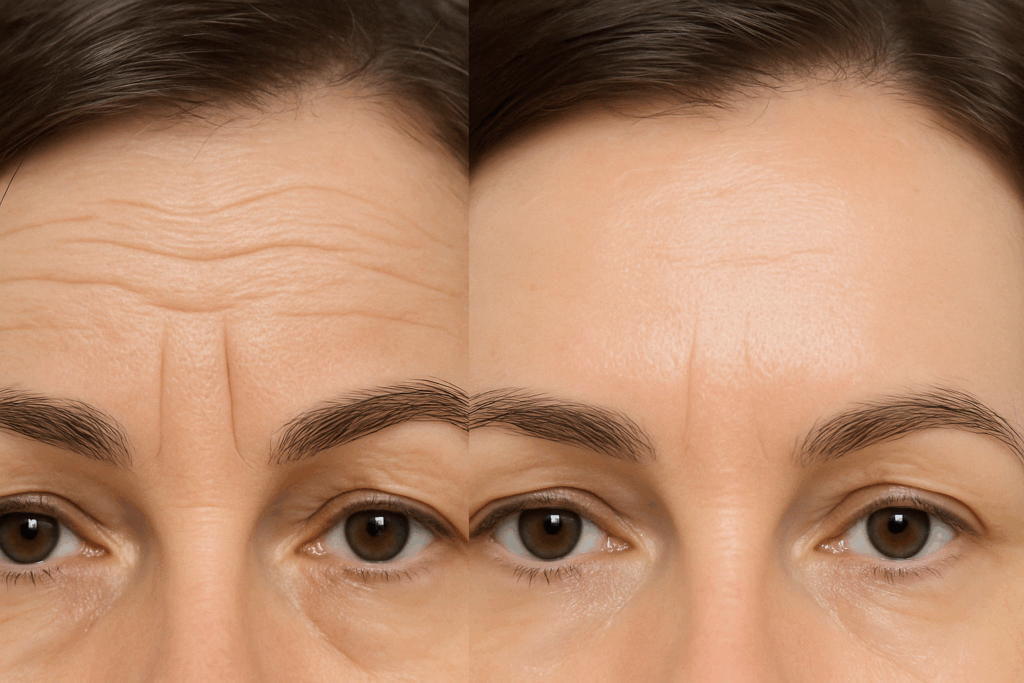
Retinol Before and After Forehead Wrinkles: What Can You Expect?
Among the most dramatic and well-documented effects of retinol is its impact on forehead wrinkles. These horizontal lines are often among the first visible signs of aging due to repetitive facial expressions and the natural decline in skin elasticity. Before-and-after comparisons of retinol users show a noticeable softening of these lines, with skin appearing plumper and more resilient after consistent use. Clinical photographs used in dermatological trials frequently highlight improvements in the depth and length of forehead wrinkles after 12 weeks of nightly retinol application. However, these transformations do not occur in isolation. Complementary practices such as daily sunscreen use, adequate hydration, and avoidance of harsh exfoliants are crucial for achieving optimal results.
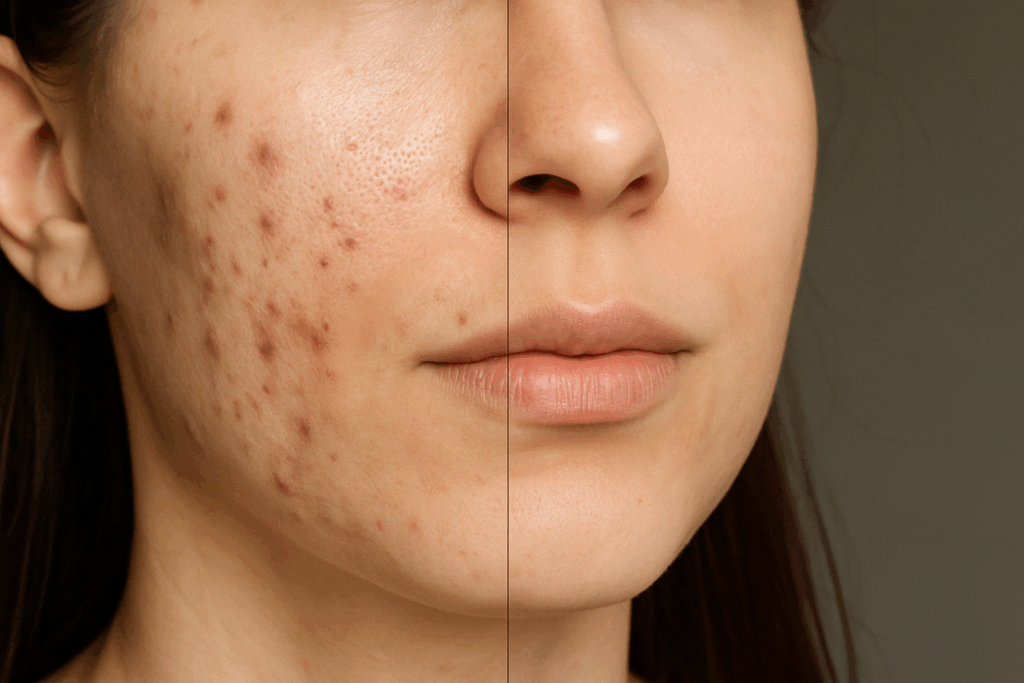
How Long for Retinol to Work on Acne and Pigmentation?
For individuals using retinol to treat acne or post-inflammatory hyperpigmentation, the timeline can vary depending on the severity of the condition and the formulation used. Most dermatologists note that users can expect a purge phase within the first few weeks, during which acne may temporarily worsen. This is a sign that retinol is accelerating cellular turnover and bringing underlying blockages to the surface. After this phase, typically lasting two to four weeks, the complexion begins to improve. By the eight-week mark, many users report fewer breakouts and a clearer skin tone. With hyperpigmentation, such as melasma or dark spots from healed acne, it may take 12 weeks or more of consistent application to see substantial fading. Patience remains a central tenet of retinol therapy, especially for pigmentary disorders.
How Long Does Retinol Stay Active on Your Skin?
Understanding how long retinol stays active on your skin involves examining its molecular half-life and how it’s metabolized. When applied topically, retinol undergoes conversion to retinaldehyde and then to retinoic acid—the active form that binds to skin cell receptors. This conversion is gradual, and the active form remains engaged with skin cells for several hours post-application. Most dermatologists estimate that retinol continues to influence cellular behavior for up to eight to ten hours after application. However, this does not mean reapplication during the day is necessary or recommended. Retinol is best applied at night due to its photosensitivity. Furthermore, applying it once every 24 hours, or every other night for beginners, is generally sufficient to sustain its biological effects without overloading the skin barrier.
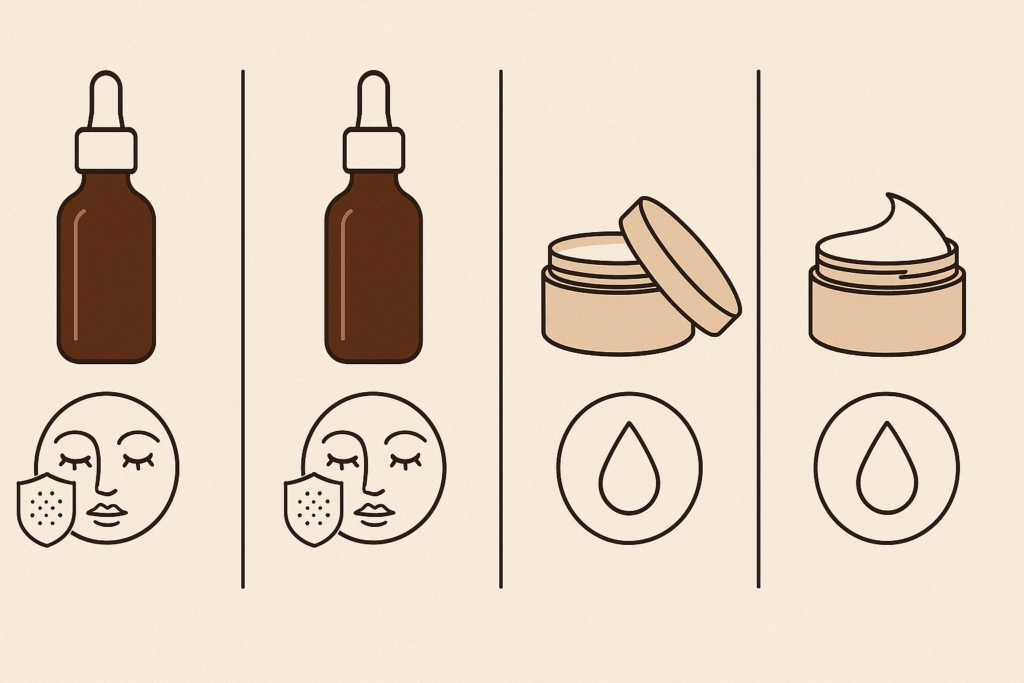
The Role of Skin Cycling in Retinol Tolerance and Results
An emerging trend among skincare professionals is the concept of skin cycling—strategically alternating active ingredients like retinol with recovery days focused on barrier repair. This method allows users to harness the benefits of retinol while reducing irritation. On retinol nights, the skin receives the active stimulus, while on recovery nights, emollients and hydrating agents like ceramides and peptides reinforce the barrier. Dermatologists find that skin cycling can extend the timeline for results slightly but often results in better long-term adherence and satisfaction. For individuals asking how long for retinol to work, integrating skin cycling into their routine may provide a sustainable path to improvement, especially if their skin tends toward dryness or reactivity.
Managing Expectations: What Retinol Can and Cannot Do
While retinol is a gold-standard ingredient, it is not a miracle cure. It can significantly improve fine lines, acne, and hyperpigmentation, but it does not provide the dramatic lifting or tightening that in-office procedures such as laser treatments or Botox offer. Likewise, deep-set wrinkles and severe sagging may respond only modestly to topical retinoids. Dermatologists stress the importance of understanding retinol’s limitations as well as its strengths. Users who begin their retinol journey with realistic expectations—aiming for gradual texture improvement rather than overnight transformation—are more likely to stay consistent and see lasting results. Education and proper guidance from skincare professionals can make all the difference in ensuring users derive both satisfaction and skin health benefits from their regimen.
Lifestyle Factors That Enhance Retinol’s Efficacy
Even the most effective ingredient can fall short if undermined by poor skincare habits or lifestyle choices. Retinol performs best when integrated into a holistic approach to skin health. Sunscreen is non-negotiable; because retinol increases photosensitivity, unprotected exposure can exacerbate pigmentation and irritation. Diet also matters—antioxidant-rich foods can support skin regeneration from the inside out. Hydration plays a key role in reducing flaking and supporting barrier function. Additionally, avoiding tobacco, managing stress, and getting adequate sleep can help preserve the gains made through retinol use. Users often ask not only does retinol actually work but also how to maximize its benefits—and the answer lies in comprehensive, consistent care.
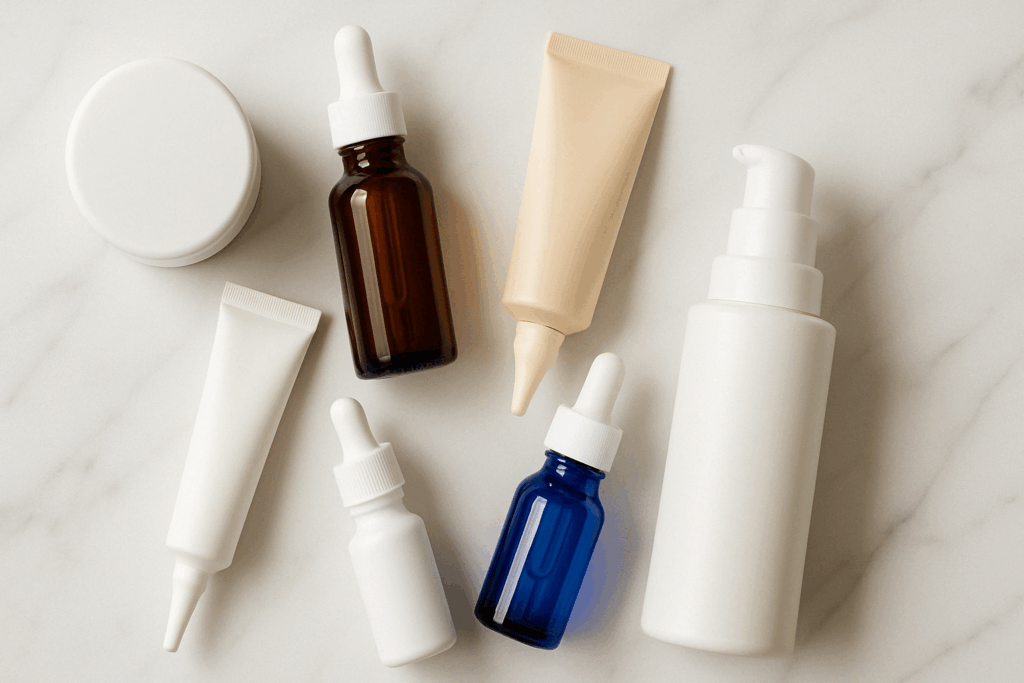
Choosing the Right Retinol Product for Your Skin Goals
Not all retinol products are created equal. For those new to retinol or with sensitive skin, starting with a lower concentration (e.g., 0.25% to 0.5%) in a moisturizing base can prevent irritation. As tolerance builds, individuals may progress to higher strengths or consider prescription options like tretinoin. Product formulation also matters—encapsulated retinol releases slowly into the skin, reducing the likelihood of irritation, while formulations with niacinamide or hyaluronic acid offer soothing benefits. Dermatologists often recommend pairing retinol with a gentle cleanser and barrier-repair moisturizer to round out the regimen. The key is to find a product that aligns with individual skin goals and tolerances, making it easier to maintain the consistent use necessary for results.
Signs Retinol Is Working: Subtle Changes to Look For
Those wondering how long does retinol take to work may be surprised to learn that early signs of effectiveness can be subtle. Increased smoothness, a more even tone, and a healthy glow may emerge within a few weeks. These improvements might not be as dramatic as a “retinol before and after forehead wrinkles” photo, but they signal that the skin is responding. Over time, pores may appear smaller, pigmentation may fade, and fine lines may soften. It’s important to document progress, either through journaling or photography, to appreciate these cumulative changes. Dermatologists advise against making judgment calls too early, as skin renewal is an ongoing process that builds with consistency and care.
When to Adjust or Discontinue Retinol Use
While retinol is generally safe for long-term use, there are instances when users should consider modifying or pausing their regimen. Persistent peeling, stinging, or inflammation beyond the initial adaptation period may indicate overuse or sensitivity. In such cases, reducing frequency or switching to a milder product can help. During pregnancy or breastfeeding, most dermatologists advise discontinuing retinoids due to potential systemic absorption. Additionally, if users are undergoing certain dermatologic procedures like chemical peels or laser resurfacing, temporarily stopping retinol may be recommended to minimize irritation. The decision to adjust or stop retinol should always be guided by professional consultation, ensuring the skin remains healthy and resilient throughout its skincare journey.
Frequently Asked Questions: How Long Does Retinol Take to Work?
1. Can retinol results vary based on age or hormonal changes?
Yes, age and hormonal fluctuations significantly influence how long retinol takes to work. For younger individuals, especially those in their 20s and early 30s, the skin’s natural turnover is relatively rapid, so improvements in acne or texture may appear within four to six weeks. In contrast, older adults, particularly postmenopausal women, often experience a slower response due to decreased collagen production and reduced cellular regeneration, sometimes requiring up to 16 weeks to see noticeable changes. Hormonal shifts—such as those occurring during pregnancy, menstruation, or perimenopause—can also affect retinol responsiveness, potentially delaying results or causing intermittent sensitivity. While many ask how long to see retinol results, the reality is that age-related biology often dictates a more personalized timeline.
2. How can diet and nutrition influence retinol efficacy?
Nutrition plays a more powerful role in topical skincare than many realize. Antioxidants like vitamin C, zinc, and omega-3 fatty acids can enhance the skin’s resilience and support the collagen-stimulating effects of retinol. A diet deficient in essential fatty acids may compromise the skin barrier, making it more reactive and less tolerant to retinol over time. Moreover, hydration from within—achieved by drinking sufficient water and consuming water-rich foods—can reduce retinol-induced dryness and flakiness, helping you maintain consistent use. When asking how long for retinol to work, consider whether your dietary habits are supporting or hindering its performance.
3. Is it safe to use retinol around the eyes and lips?
These delicate areas are often excluded from retinol routines due to their sensitivity, but with caution, they can benefit from targeted formulations. Specialized eye creams containing low concentrations of encapsulated retinol are designed for periocular skin and can reduce crow’s feet over time. However, applying traditional retinol near the lash line or directly on the lips is not recommended. Start with a pea-sized amount for the entire face, avoiding mucosal zones unless advised by a dermatologist. For those tracking retinol before and after forehead wrinkles, it’s wise to remember that results in sensitive zones may take longer and should prioritize safety over speed.
4. What is the psychological impact of waiting for retinol results?
The psychological toll of slow skincare results is often underestimated. For individuals battling persistent acne or aging concerns, delayed gratification can trigger frustration, anxiety, or even abandonment of treatment altogether. This is why understanding how long does retinol take to work is critical for emotional well-being during the treatment phase. To mitigate discouragement, dermatologists recommend setting incremental goals and documenting progress biweekly. Viewing your skin’s improvement over time—even small changes—can reinforce consistency and provide a much-needed psychological boost.
5. Are there any benefits to using retinol intermittently rather than daily?
Yes, strategic use of retinol—commonly referred to as “retinol cycling”—can reduce inflammation while still delivering cumulative benefits. In this method, users alternate between retinol and recovery nights using emollients, which helps extend how long retinol stays active on your skin without overwhelming the barrier function. This is particularly beneficial for those with sensitive or compromised skin. Dermatologists often note that with intermittent use, the timeline for how long to see retinol results might be extended by a few weeks, but the lower risk of irritation often leads to better adherence and overall satisfaction.
6. Can climate and seasonal changes affect how long retinol takes to work?
Absolutely. Environmental factors such as humidity, temperature, and UV exposure can all impact how retinol performs. In colder, drier months, the skin tends to be more reactive and prone to flaking, which can delay how long for retinol to work effectively. Conversely, in warmer climates with higher humidity, retinol absorption may improve, but users need to be extra diligent about sun protection to avoid photosensitivity. Understanding how long retinol stays active on your skin also involves factoring in daily environmental stressors that could either enhance or hinder its results.
7. How do professional treatments influence retinol outcomes?
In-office treatments like microneedling, chemical peels, and fractional lasers can synergize with retinol therapy to accelerate results. For example, pre-treating the skin with retinol before microneedling has been shown to increase collagen production and enhance texture improvements. These adjunctive procedures can reduce the time it takes to achieve the smoothing seen in retinol before and after forehead wrinkles comparisons. However, it’s essential to pause retinol a few days before and after such treatments to minimize irritation. By combining professional interventions with at-home retinol, users often find that how long to see retinol results shortens significantly under expert guidance.
8. What are some lesser-known signs that retinol is working?
Many users fixate on wrinkle depth or acne reduction, but subtler changes also signify retinol efficacy. A more refined pore structure, diminished post-shave irritation, and increased absorption of other skincare ingredients are early but often overlooked indicators. Some individuals even report fewer ingrown hairs in treated areas, thanks to retinol’s exfoliating properties. While the focus is often on how long does retinol take to work in a dramatic sense, these nuanced benefits can appear within the first month and serve as early validation of your skincare commitment.
9. Is there a point at which retinol stops providing new benefits?
This is a nuanced topic. While retinol doesn’t necessarily “stop working,” its benefits may plateau after prolonged use, particularly once major concerns like acne or hyperpigmentation are resolved. At that point, the focus often shifts from treatment to maintenance. Users may then reduce application frequency or transition to lower-strength formulations while still enjoying long-term gains in skin health. For those curious about how long retinol stays active on your skin, remember that its longevity in effectiveness depends more on consistent, calibrated use than indefinite escalation.
10. How can users track progress without relying solely on visual changes?
Besides photographs, users can monitor skin behavior through tactile assessments—how smooth the skin feels, how easily makeup applies, or how quickly breakouts resolve. Keeping a skin journal to note reactions, hydration levels, and even compliments from others can help gauge subtle but meaningful improvements. Since the question of how long for retinol to work doesn’t always yield visible milestones right away, engaging other senses and feedback mechanisms can offer a more holistic view of progress. Dermatologists encourage this approach, especially during the initial months when changes are more textural than visual.
Conclusion: Setting Realistic Expectations for How Long Retinol Takes to Work
For anyone wondering how long does retinol take to work, the answer lies in understanding both the science and the art of skincare. Retinol is not a quick fix, but rather a long-term investment in skin health that rewards patience, consistency, and proper use. From the early days of flaking and purging to the eventual brightening and smoothing of skin tone, the journey is one that unfolds gradually but meaningfully. Clinical evidence confirms that retinol actually works—and works well—when integrated thoughtfully into a well-rounded skincare routine. Its effects on fine lines, acne, and even stubborn concerns like forehead wrinkles are well documented, but they are also contingent on user diligence and realistic expectations. By knowing how long to see retinol results and respecting the nuances of how long retinol stays active on your skin, individuals can better navigate the ups and downs of this transformative ingredient. Ultimately, retinol offers not just cosmetic enhancement but also a deeper alignment with the principles of preventive dermatology and lifelong skin wellness.
Was this article helpful? Don’t let it stop with you. Share it right now with someone who needs to see it—whether it’s a friend, a colleague, or your whole network. And if staying ahead on this topic matters to you, subscribe to this publication for the most up-to-date information. You’ll get the latest insights delivered straight to you—no searching, no missing out.
Further Reading:
Retinol: Cream, Serum, What It Is, Benefits, How To Use
How Does Retinol Work? Facts, Side Effects, and More
Retinol Timeline: How Long Does Retinol Take to Work?
Disclaimer
The information contained in this article is provided for general informational purposes only and is not intended to serve as medical, legal, or professional advice. While Health11News strives to present accurate, up-to-date, and reliable content, no warranty or guarantee, expressed or implied, is made regarding the completeness, accuracy, or adequacy of the information provided. Readers are strongly advised to seek the guidance of a qualified healthcare provider or other relevant professionals before acting on any information contained in this article. Health11News, its authors, editors, and contributors expressly disclaim any liability for any damages, losses, or consequences arising directly or indirectly from the use, interpretation, or reliance on any information presented herein. The views and opinions expressed in this article are those of the author(s) and do not necessarily reflect the official policies or positions of Health11News.